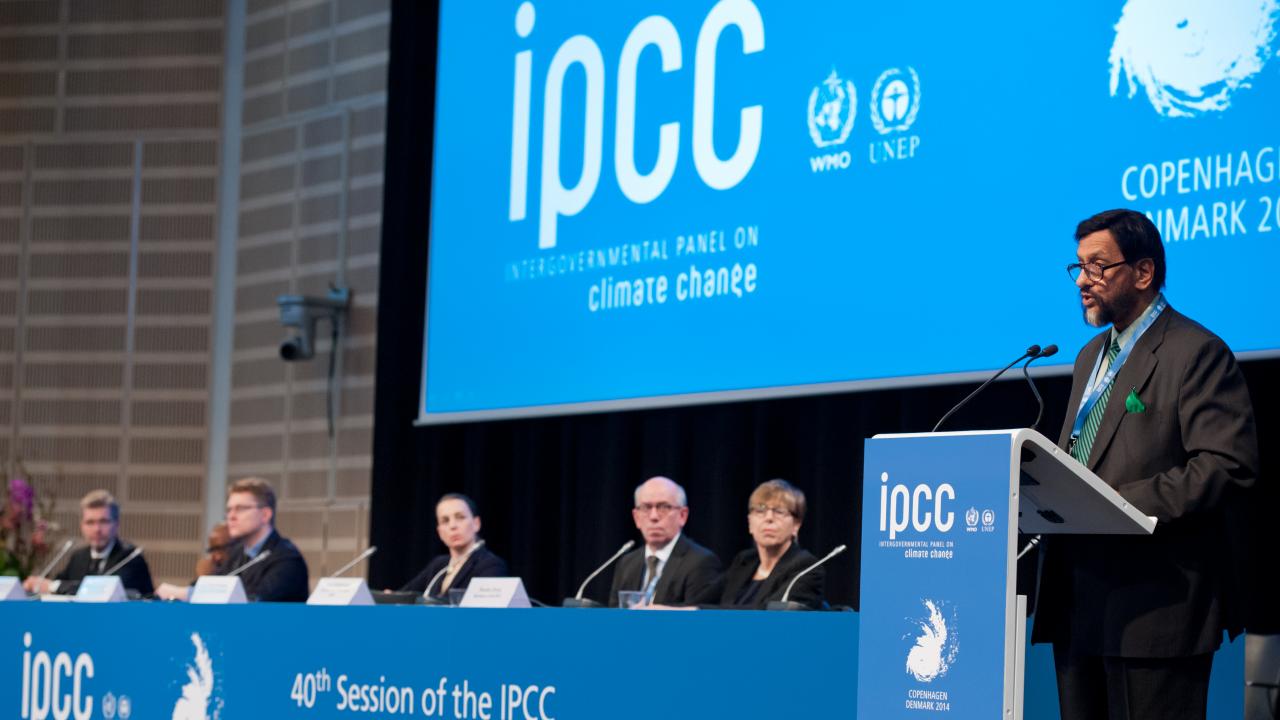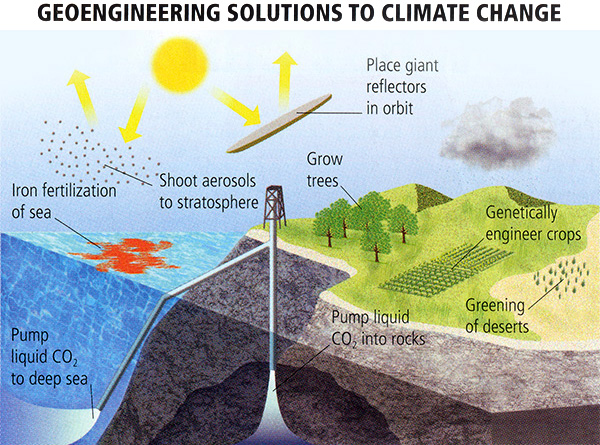Geoengineering, right wing greens and the IPCC
Originally this piece was about geoengineering and the danger it presents, it changed when I attended a presentation by Professor Jim Skea, Co-chair of Working Group 3 for the next IPCC assessment report, hosted by the Royal Society of New Zealand and I was struck by a disconcertingly similar pattern of thinking and, seemingly, similar motives. Now with talk about a “teal” party and centrist (right wing) environment party it seems just as relevant.
I should say that there are many in the climate justice movement who are already looking beyond the problems outlined here. There are also new groups like Extinction Rebellion which show promise as they focus on the need for collective action due to the urgency of the problem, and the even the government is beginning some things such as a just transition process, the upcoming Climate Commission and the new off-shore oil exploration ban.
However, some people do not see climate change as a symptom of wider social and economic problems. Instead it is seen as a challenge for our current globalised free market economy to overcome. In the IPCC presentation I saw a collection of plans seeking to reduce greenhouse gas emissions and avoid catastrophic climate change while also limiting social and economic change as much as possible. Trying to solve climate change without changing the current social and economic structures which cause it.
We can also see this in thinking about a “centrist” or right wing environmental party. It is blatantly clear that a right wing Party like National will not accept the dramatic social and economic changes necessary for a sustainable and fair world any time soon. One simple example is the problem of economic growth. We live on a finite planet with finite resources and therefore cannot grow infinitely. The recent return to increasing levels of GHG emissions are connected with the return to economic growth. The need to stop the juggernaut of economic growth would be a hard to convince Labour of let alone National and that’s just one issue. It seems clear that, given their track record of mining and support for intensive dairying that any even a modest attempt at a “Teal” party being a right wing environmental conscience will fall short. Let alone be enough to prevent something like catastrophic climate change. Either supporters of a “teal” party naively believe that the National Party will adopt environmentally sound policy or they’re doing this for political ends. Neither situation is good.
It struck me that this is a similar goal geoengineers often have. Skaea is the chair of the Intergovernmental Panel on Climate Change’s mitigation report committee. Given how often environmentalists refer to these reports I found myself asking, how much of the environmental movement is thinking like this?
Given the “Teal” party talk, clearly some are.
Jim Skea and the IPCC
When I went to this talk at I was a bit sweaty from the bike ride and found a seat next to no one I knew. The Royal Society’s projection was titled, “science solutions to climate change.” I was expecting certain amounts of talk about space mirrors and shooting sulfur monoxide into the atmosphere, partly because it had been mentioned in an earlier interview on Radio New Zealand and because the Royal Society is known to have funded research into geoengineering. I saw the number of grey heads in the audience and remembered that this was a talk by someone from the IPCC. I realised it was going to be dry. It was also phenomenally disempowering.

The IPCC reports are compiled based on research already done and then approved by the member states of the United Nations. As Skea himself pointed out, their “summaries for policy makers” are in fact edited by policy makers at the United Nations. It is no surprise then that the solutions proposed by the IPCC are middle ground and ones which the member states of the UN will be content with. Oddly, during some peculiar attempt to justify the system Skaea described this as boosting their reports’ “robust integrity.”
What shocked me during his presentation was the realisation that the IPCC solutions are the solutions which the mainstream environmental movement are promoting.
Maintaining Economic Growth
The goal of the IPCC seems to be to maintain the present social and economic structures while dealing with climate change. As though to demonstrate this Skea kept mentioning how, “we can deal with climate change and maintain economic growth.” He did not seem to see any connection between economic growth and our growing emissions. His talk focused on technology, no surprise considering its title, and gave the impression that all solutions will come from above, “the experts” : scientists, engineers, politicians, businesses etc. This was also reflected in questions from the audience. For example, one question was about how, “engineers and scientists will work together to find the solutions we need.” Even carbon capture and storage, an unproven technology currently used to boost oil production, was promoted as a solution to suck emissions from the atmosphere using biomass to absorb them, then burn the biomass in a CCS plant supposedly leading to a reduction in emissions.
As if solutions from above weren’t disempowering enough, the host from the Royal Society left everyone that the only action they could take was change their own lifestyles. About twenty minutes after I was shouted down by Royal Society host Ralph Simms for questioning carbon capture and storage he embarked on what seemed to be an attempt at shaming people in the audience. He asked people how they were getting home. Those who were cycling, walking, busing or training were congratulated by Ralph, the one person with an electric car received riotous applause and those driving were told that it was alright because they had more than one person in the car.
The message the Royal Society left people with was to wait for an “expert” to solve the political problem and change a small aspect of your own lifestyle. Instead of being told to hassle those causing the problem, oil companies etc, we were being told to change our light bulbs, catch a train and buy the right type of car.
Surface Level Solutions
What was interesting for me was how this whole experience clearly illustrated all the talks and articles I have read about the old mainstream environmental movement with its focus on emissions reduction targets, government, business and technological solutions, and little things about “doing your bit at home.” I believe that this is what has made the challenge of climate change so difficult to deal with. While we’re trying to ignore the structural problems causing climate change the only solutions we can really offer are at the surface level.
Geoengineering
One analogy given for geoengineering solutions to climate change is that of rocking a row boat. One person is standing up and rocking the boat back and forth. Instead of the obvious answer, which is “stop rocking the boat – you’ll make us capsize” the geoengineers propose a counter balancing solution. Using complex equations they can build a machine to balance out the rocking rather than stopping it.
What is geoengineering?
 Geoengineering has its pseudo scientific roots in almost farcical forms of weather control and other attempts to control nature in science fiction and mythology. It is part of a world view which sees the world as a complex machine which humans, with the appropriate study and resources, can control to our advantage and, sometimes, others’ disadvantage. It is an attempt to control the world on a global scale. Be it controlling the climate through a global scale form of air conditioning, or Dr Evil-like plans to trigger world-wide volcanic eruptions, geoengineering manipulates the globe to fulfill desires.
Geoengineering has its pseudo scientific roots in almost farcical forms of weather control and other attempts to control nature in science fiction and mythology. It is part of a world view which sees the world as a complex machine which humans, with the appropriate study and resources, can control to our advantage and, sometimes, others’ disadvantage. It is an attempt to control the world on a global scale. Be it controlling the climate through a global scale form of air conditioning, or Dr Evil-like plans to trigger world-wide volcanic eruptions, geoengineering manipulates the globe to fulfill desires.
Geoengineering will become an increasingly popular topic as the world begins to experience the effects of climate change. Years ago I was not too worried about climate change because I saw some of the wilder forms of geoengineering as possible solutions. However, geoengineering is at best a distraction from tackling the real problems posed by capitalism and climate change. At worst it could create vast new problems while never solving first ones. Geoengineering is a dangerous tool which will likely be used, if it is used, to prop up the status quo once all the other options of emissions trading and carbon capture are no longer viable.
Givers and Takers: Conflicting world-views
In a recent book by science historian James Flemming he speaks of the idea of givers and takers.
“Takers [see] the world as having been made for them and belonging to them, so they sought to manipulate and control it. Since then they have systematically expanded their own food resources and their population at the expense of other species. Their quest for control seemingly knows no bounds.”
This concept of Takers is similar to that given by Marxist Vanuatan accountant Pala Molisa of the dominant form of thought in colonised countries today. “Relationships based on the domination/subordination dynamic that existing social systems are currently based on is comfortable for individuals from dominant class, race and gender groups, but collectively it’ll mean our end.”
We can see Takers throughout Western culture. Not only through the exploitation of natural resources, but also the exploitation of other people and their resources. One clear example is colonialism. In Aotearoa colonists saw this country as Godzone, a world made for them. The consequence of course was that they acted like it was. The disappropriation of land and resources of Maori and Moriori to the colonial government and colonists is just one very simple example of this. Another is that of geoengineering. The geoengineering solutions to climate change, a problem caused by power structures which encouraged the rabid exploitation of resources, are not to shift or change the power structures and our exploitation of resources. Instead they seek to shift or change the world to balance out the problems these Takers have created. Flemming compares them to Archimedes hypothesising about shifting the world with a long enough lever, or the mythological Phaethon whose arrogance leads to his crashing his father’s chariot into the sun.
 This has also been seen through science fiction. In some turn of the 20th century science fiction we can see the clash of this desire to control the world, and the profit motives of capitalism. In Jules Verne’s “The Purchase of the North Pole” an oil and gas company attempts to shift the earth’s axis to melt polar ice caps and access the reserves they have just purchased underneath. Little did they know that instead of turning mount Kilimanjaro into a giant canon they simply had to wait a hundred years. Or we can see this in George Engalnd’s “The Air Trust” in which a business creates an oxygen extractor and bottler. This business seeks to suck up oxygen forcing people to buy their own branded air. Already businesses have patented seeds which either terminate, thanks Monsanto, or are protected from being reproduced naturally through trade deals and laws. In China canned air is available in response to their growing smog problems. The fault lies not in individuals but the system itself.
This has also been seen through science fiction. In some turn of the 20th century science fiction we can see the clash of this desire to control the world, and the profit motives of capitalism. In Jules Verne’s “The Purchase of the North Pole” an oil and gas company attempts to shift the earth’s axis to melt polar ice caps and access the reserves they have just purchased underneath. Little did they know that instead of turning mount Kilimanjaro into a giant canon they simply had to wait a hundred years. Or we can see this in George Engalnd’s “The Air Trust” in which a business creates an oxygen extractor and bottler. This business seeks to suck up oxygen forcing people to buy their own branded air. Already businesses have patented seeds which either terminate, thanks Monsanto, or are protected from being reproduced naturally through trade deals and laws. In China canned air is available in response to their growing smog problems. The fault lies not in individuals but the system itself.
